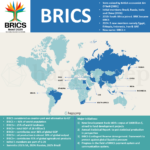Prepositions in English
Prepositions in English
Introduction
Prepositions are small but powerful words in English. They help us show the relationship between nouns or pronouns and other words in a sentence. Without prepositions, our sentences would lack clarity and meaning.
For example:
- The book is on the table. (The preposition “on” shows the relationship between “book” and “table.”)
- She is going to school. (The preposition “to” shows the direction of movement.)
What is a Preposition?
A preposition is a word that connects a noun or pronoun to other words in a sentence and shows relationships such as place, time, direction, manner, or cause.
Examples of Prepositions in Sentences:
- The cat is under the table. (Under shows position.)
- He arrived before 8 AM. (Before shows time.)
- We walked through the park. (Through shows direction.)
A prepositional phrase consists of a preposition + noun/pronoun (e.g., on the table, in the room, before lunch).
Types of Prepositions
Prepositions can be divided into different types based on their function in a sentence.
Prepositions of Place (Where?)
These prepositions show the location of something.
Common Prepositions of Place:
- In, On, At, Under, Over, Between, Behind, Next to, Beside, Near
Examples in Sentences:
- The phone is on the table.
- The keys are in the drawer.
- She is sitting between her friends.
Note:
- Use “in” for enclosed spaces (in a room, in a box).
- Use “on” for surfaces (on the table, on the wall).
- Use “at” for specific points (at the door, at the bus stop).
Prepositions of Time (When?)
These prepositions indicate a point in time or a duration.
Common Prepositions of Time:
- In, On, At, Before, After, During, Since, Until, By, From
Examples in Sentences:
- I was born in June.
- The train arrives at 5 PM.
- He left before lunch.
Note:
- Use “in” for long periods (in 2023, in the morning, in summer).
- Use “on” for specific days (on Monday, on my birthday, on Christmas Day).
- Use “at” for precise times (at 7 AM, at night, at noon).
Prepositions of Direction or Movement (Where to?)
These prepositions show movement from one place to another.
Common Prepositions of Direction:
- To, Into, Onto, From, Through, Towards, Across, Up, Down
Examples in Sentences:
- She walked to the market.
- The cat jumped onto the bed.
- We drove through the tunnel.
Note:
- Use “to” for destinations (She went to the park).
- Use “into” when entering a place (He walked into the room).
- Use “onto” when moving to a surface (She climbed onto the chair).
Prepositions of Manner (How?)
These prepositions describe the way something happens.
Common Prepositions of Manner:
- With, By, Like, As, In
Examples in Sentences:
- She painted the picture with a brush.
- He traveled by car.
- She works as a teacher.
Note:
- Use “by” for means of transport (by car, by train, by bus).
- Use “with” when referring to an instrument (with a pen, with a knife).
Prepositions of Cause, Reason, or Purpose (Why?)
These prepositions explain the reason for an action.
Common Prepositions of Cause:
- Because of, Due to, Owing to, For, From
Examples in Sentences:
- The match was canceled because of the rain.
- He was absent due to illness.
- She cried from happiness.
Prepositions of Comparison and Contrast
These prepositions show similarity or difference between things.
Common Prepositions of Comparison:
- Like, Unlike, As, Than
Examples in Sentences:
- She sings like a professional.
- Unlike her brother, she loves to read.
- This book is better than that one.
Compound Prepositions
These are prepositions made up of two or more words.
Common Compound Prepositions:
- Because of, In front of, Instead of, Next to, On behalf of
Examples in Sentences:
- He left early because of an emergency.
- She sat next to her best friend.
- He spoke on behalf of the team.
Note: Compound prepositions always come before a noun or pronoun.
Prepositions of Possession
These prepositions show ownership or relationship.
Common Prepositions of Possession:
- Of, Belonging to, With, To
Examples in Sentences:
- The pages of the book are torn.
- That bag belongs to her.
- The girl with the blue dress is my sister.
Note:
- Use “of” to indicate possession (the keys of the car = the car’s keys).
- Use “belonging to” for ownership (This house belongs to me).
Summary
Type | Function | Examples |
Prepositions of Place | Show where something is | On the table, under the chair |
Prepositions of Time | Show when something happens | In July, at 5 PM, on Monday |
Prepositions of Direction | Show movement or destination | Go to school, walk through the park |
Prepositions of Manner | Show how something happens | Travel by bus, cut with a knife |
Prepositions of Cause | Show reason | Cancelled because of rain, happy from success |
Prepositions of Comparison | Show similarity or difference | She sings like a professional, unlike her brother |
Prepositions of Possession | Show ownership | The house of my father, a man with a beard |
Compound Prepositions | Prepositions made of two or more words | Because of, in front of, instead of |
Quick Links
Want to read some more articles?
-
 Shanghai Cooperation Organization (SCO): Origin, Members, Facts, etc for UPSC and other exams
Shanghai Cooperation Organization (SCO): Origin, Members, Facts, etc for UPSC and other exams -
 BRICS: Origin, members and others for UPSC, PSC & other exams
BRICS: Origin, members and others for UPSC, PSC & other exams -
 BIMSTEC for UPSC: Origin, Members & More
BIMSTEC for UPSC: Origin, Members & More -
 General Science for Competitive exams: UPSC, PSC, APFC, EO-AO, SSC, etc
General Science for Competitive exams: UPSC, PSC, APFC, EO-AO, SSC, etc -
 THE TRADE UNIONS ACT, 1926 for UPSC EPFO APFC/EO-AO, ALC, and Other exams
THE TRADE UNIONS ACT, 1926 for UPSC EPFO APFC/EO-AO, ALC, and Other exams -
 Understanding Macroenvironment: Marketing Environment in Principles of Marketing
Understanding Macroenvironment: Marketing Environment in Principles of Marketing -
 Understanding Microenvironment: Marketing Environment in Principles of Marketing
Understanding Microenvironment: Marketing Environment in Principles of Marketing -
Interjections in English
-
Conjunctions in English
Recruitment notifications update!
-
Recruitment 2025: Recruitment for Teaching Staff in The School of Planning and Architecture, New Delhi - Vacancy, Posts, Grade Pay, etc
-
Recruitment 2025: Vacancies in Inter-University Centre for Astronomy and Astrophysics (IUCAA)
-
Recruitment 2025: Recruitment on Deputation basis in National Anti Doping Agency (NADA)
-
Recruitment 2025: Various vacancies in Artificial Limbs Manufacturing Corporation of India (ALIMCO)
-
Recruitment 2025: Various vacancies in Land Ports Authority of India
Copyright© 2024 | All rights reserved | Made in India